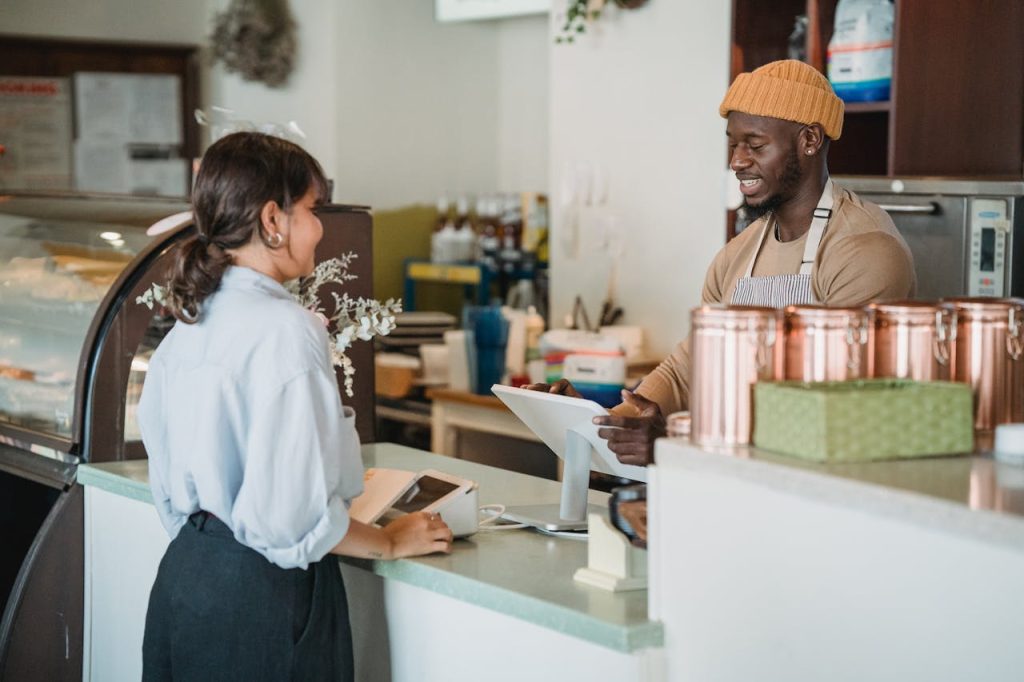Digital ordering has moved from being a novelty to a necessity. Over the past decade, the way people order food, drinks, and even retail items has completely transformed. What started as basic web-based ordering has evolved into an ecosystem of apps, kiosks, mobile payments, and integrated loyalty programs. For businesses, keeping up isn’t optional—it’s the key to staying competitive.

Let’s break down how digital order solutions have evolved, where the industry is heading, and what businesses need to know to thrive in this new landscape.
Contents
The Early Days: Simplicity and Convenience
The first digital ordering platforms were straightforward. They focused on one thing: making it easier for customers to place an order without waiting in line or making a phone call.
Early adopters were mainly quick-service restaurants. Their customers wanted speed and predictability, and online ordering gave them both. For businesses, these systems were simple—orders came through a website or basic app, and staff would manually input them into the POS system.
It wasn’t perfect, but it was a start. It gave businesses their first taste of digital efficiency and gave customers a glimpse of what a more connected experience could feel like.
The Rise of Mobile and Apps
Smartphones changed everything. Suddenly, customers weren’t tied to a desktop to place an order—they could do it from anywhere. Brands started investing in mobile apps, and with them came new capabilities like saved preferences, order histories, and push notifications for promotions.
For businesses, mobile ordering opened new doors. They could gather data about their customers’ habits, improve personalization, and build loyalty in ways that weren’t possible before.
This era also saw the first steps toward integration, with digital orders flowing directly into POS systems instead of requiring manual entry. The process became faster, more accurate, and more scalable.
Kiosks and On-Premise Solutions
As digital ordering matured, it started to make its way into physical locations. Self-service kiosks popped up in quick-service and fast-casual restaurants, giving customers the freedom to browse menus, customize their orders, and pay without interacting with staff.
The benefits were clear:
- Reduced wait times during busy periods
- Increased average ticket sizes thanks to upsell prompts
- Fewer order errors since customers entered their choices themselves
Kiosk ordering became a game-changer for high-volume businesses, and customers quickly grew to expect the option.
The Pandemic Acceleration
Then came 2020. The pandemic forced the industry to innovate at lightning speed. Businesses that had been slow to adopt digital solutions suddenly had no choice.
Contactless ordering and payment became standard almost overnight. Curbside pickup, QR code menus, and delivery integrations surged as businesses scrambled to meet safety guidelines while keeping revenue flowing.
This period didn’t just increase adoption; it permanently shifted customer behavior. Even after restrictions lifted, customers kept using these digital tools because they were convenient and familiar.
The Data-Driven Era
Today, digital order solutions aren’t just about facilitating transactions—they’re about creating smarter, more personalized experiences powered by data. Every digital interaction provides valuable insight: what customers order, when they order, and how they like to pay.
Businesses can now:
- Predict peak demand and optimize staffing
- Tailor promotions to individual preferences
- Track the performance of menu items in real-time
- Seamlessly integrate loyalty programs and rewards
This shift toward intelligence has transformed digital ordering from a convenience feature into a strategic business asset.
The Role of Integration
Modern digital ordering platforms don’t operate in isolation. They integrate with POS systems, loyalty programs, CRMs, and even inventory management tools.
This level of connectivity means businesses can streamline operations while creating a more cohesive customer experience. Orders flow smoothly from the customer to the kitchen, payments sync automatically, and loyalty points are updated instantly.
Providers like Qikserve have played a key role in driving this integration, helping businesses create seamless digital journeys that meet the expectations of today’s tech-savvy consumers.
What Businesses Need to Know to Stay Competitive
The evolution of digital order solutions has created as many opportunities as challenges. Here’s what businesses should focus on now:
1. Invest in Flexibility
The digital landscape changes quickly. Choose platforms that can adapt—whether that means integrating with new payment methods, adding AI-driven personalization, or connecting with delivery partners.
2. Prioritize User Experience
Customers expect intuitive, fast, and reliable systems. Clunky apps or kiosks that crash during peak hours can do more harm than good. Test thoroughly and invest in regular updates to keep the experience smooth.
3. Leverage Data Wisely
Data is powerful, but only if you know how to use it. Track key metrics like average order value, repeat usage, and customer preferences. Use this information to refine your menu, marketing, and staffing strategies.
4. Stay Ahead of Trends
Voice-assisted ordering, AI-driven recommendations, and hyper-personalization are on the horizon. Staying informed about emerging technologies helps ensure you’re not left behind when customer expectations shift again.
5. Keep Security in Focus
With more digital transactions comes greater responsibility for protecting customer data. Invest in platforms that prioritize security and compliance to build trust and avoid costly breaches.
The Future of Digital Ordering
Looking ahead, digital ordering will become even more immersive and interconnected. We’re already seeing advancements like:
- AI-powered order suggestions based on weather, time, or past behavior
- Deeper integration with wearable tech for hands-free ordering
- Smart kitchens that sync prep times with real-time order flow
The businesses that thrive will be the ones that embrace these changes early, using them to create better customer experiences and more efficient operations.
Final Thoughts
Digital order solutions have come a long way from their humble beginnings. What started as a simple way to skip the line has evolved into a powerful ecosystem that drives revenue, builds loyalty, and shapes customer behavior.
For businesses, the message is clear: digital ordering isn’t an optional add-on anymore—it’s a core part of your strategy. The sooner you invest in the right tools, the sooner you can turn every order into an opportunity to grow.
What is your reaction to this?

 I liked it
I liked it Wonderful
Wonderful Thanks
Thanks Good
Good Hahaha !
Hahaha ! Incredible
Incredible Interesting
Interesting Wrong
Wrong